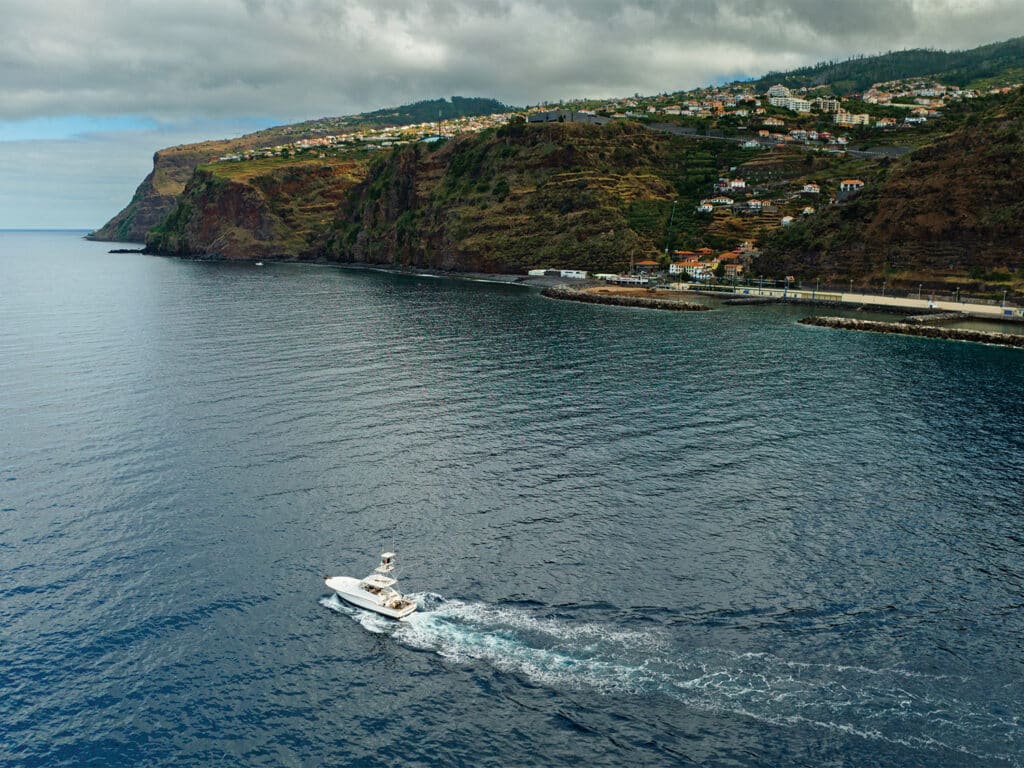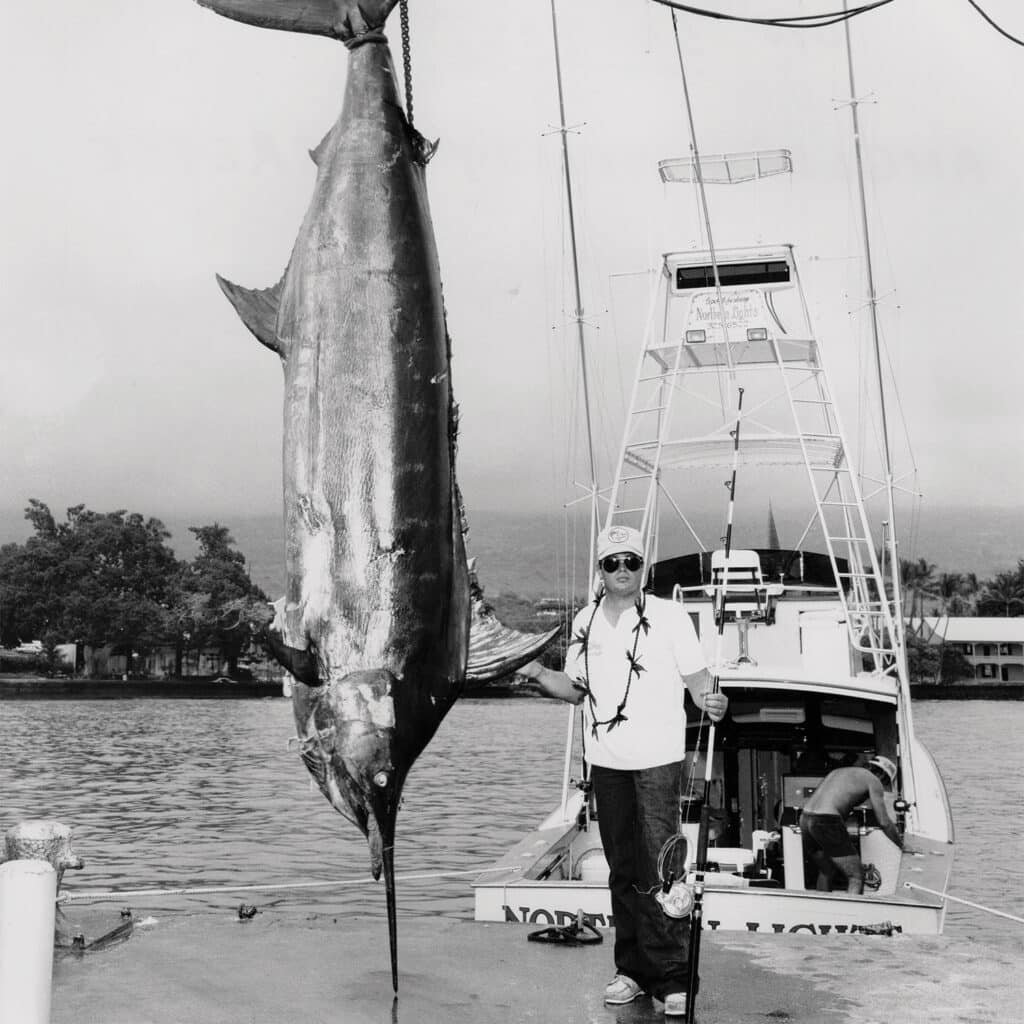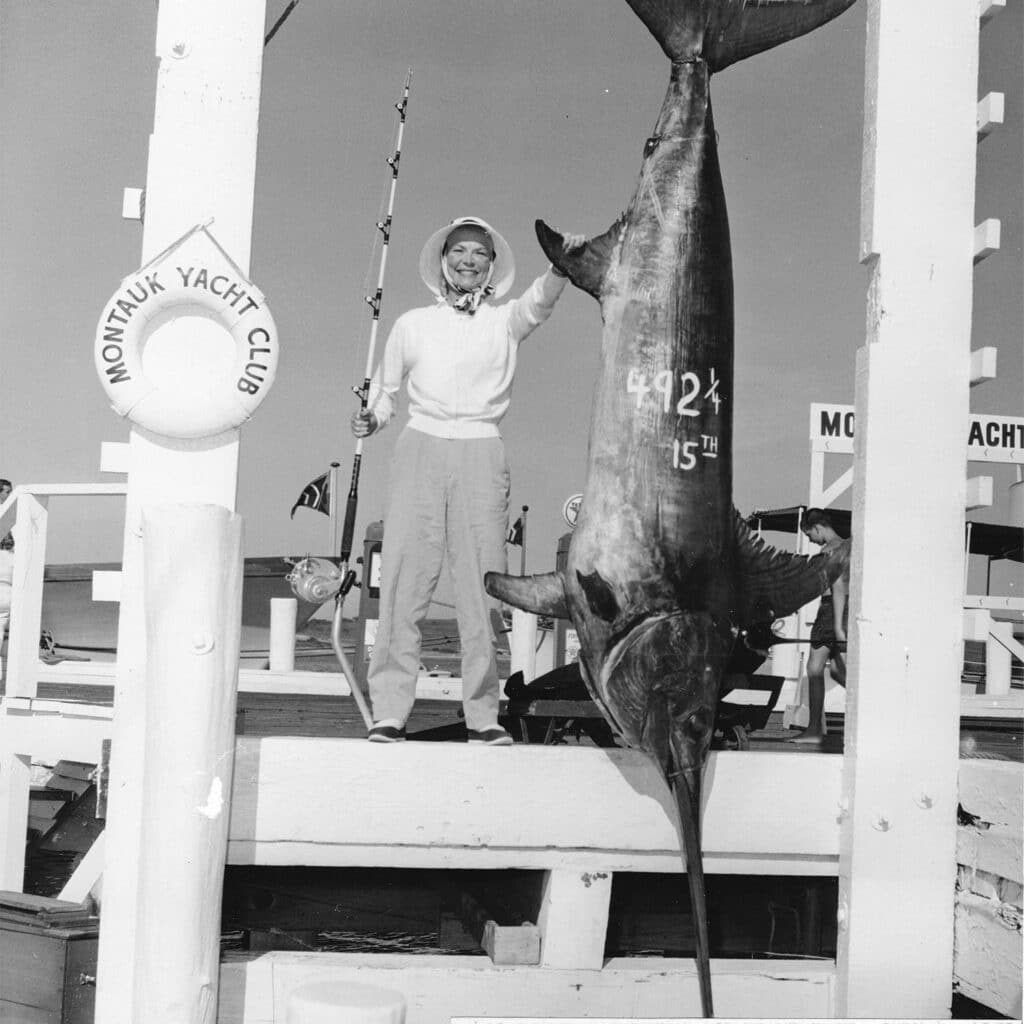
Special delivery: Sign up for the free Marlin email newsletter. Subscribe to Marlin magazine and get a year of highly collectible, keepsake editions – plus access to the digital edition and archives.
It’s a question Capt. Skip Smith posed in one of his back-page departments in Marlin: Where will the next world records come from? It’s a question that gets batted around among fishermen on the docks and in the bars from time to time, and one we felt was worthy of a deeper dive. One invaluable resource is the IGFA’s annual publication, World Record Game Fishes. Because history is most likely to repeat itself, a check of the existing records is a good starting point. There are also those up-and-coming fisheries that have potential but might not be ready for prime time just yet and others that have sadly seen their glory days come and go.
Atlantic Blue Marlin
Except for a handful of fish—including the current all-tackle record from Brazil—nearly every line-class world record for Atlantic blue marlin has come from the same region in the northeastern Atlantic Ocean: the Canary Islands, the Azores and Madeira. The anglers who caught these fish read like a who’s who of the IGFA: Stewart and Nikki Campbell, Leo Cloostermans, Gary and Sherrell Carter, and Jada Van Mols Holt, among others. All are seasoned record chasers and not casual fishermen out for a day on the water, but this lends even more credibility to their choices in terms of destinations. And there are a few big-fish destinations outside this particular area, namely Brazil, Cape Verde, Ascension Island and the Ivory Coast. Western Africa is generally out of the picture due to a lack of charter boats and facilities for visitors, and there is no way to fish off Ascension without a fully self-contained mothership/gameboat operation. However, Brazil and Cape Verde both have excellent blue marlin fishing, with some giants caught every year. Cape Verde in particular also has a plethora of top-shelf charter operations, nearly any of which would be suitable for chasing a world record.

Pacific Blue Marlin
Moving into the wild, open Pacific Ocean, the records for blues here are much more scattered, from Panama and Mexico to Australia, New Zealand and even Japan. But one hotspot remains at the top of the list: Kona, Hawaii. It’s home to not only the all-tackle record of 1,376 pounds but two more granders—a 1,103-pound fish on 30-pound-test and a 1,166-pounder on 50-pound, the latter caught by Ray Hawkes during the Hawaiian International Billfish Tournament in 1993. With an international airport just minutes from downtown Kailua-Kona, it’s a fishery that’s readily accessible by anglers traveling from virtually anywhere in the world. Nearly every charter boat there is accustomed to fishing with heavy tackle, and as a bonus, the seas are almost always flat-calm year-round. There have been blue marlin weighing more than 1,000 pounds landed in Kona during every month of the calendar, and while the best big-fish action is generally in the spring, summer and early fall, there was a run of giants as recent as January 2023. So, the best time to fish Kona is simply when you can.
Striped Marlin
While these are the most widespread of the marlin species in terms of geographic distribution around the globe, virtually every IGFA record for striped marlin originates from the same place, and that is New Zealand. The all-tackle mark of 494 pounds was set in 1986, but most of the records have been landed since 2000, with several coming in as recently as 2016 (Mikhall Cowen’s 466-pound fish on 80-pound-test), as well as a pair of ladies records from 2017. There is not a tremendous amount of fishing pressure in this part of the world, which makes this a very viable option. Even the destinations resonate with adventure: Pandora Bank, Three Kings, Tutukaka and Whangamumu, among a host of others.
Black Marlin
Although there have been several line-class records set out of Tropic Star Lodge in Piñas Bay, Panama, it’s no surprise that nearly every other record black marlin has come from Australia’s Great Barrier Reef. It is a well-known spawning aggregation for large females each fall, with perhaps one of the finest heavy-tackle charter fleets in the world. The outlier here of course is the all-tackle black marlin—Alfred Glassell’s 1,560-pound beast from Cabo Blanco, Peru, caught in 1953. And while not as well known, the ladies 130-pound-test record also came from Cabo Blanco when Mrs. Charles Hughes weighed a 1,525-pound black in 1954. Unfortunately, that is one fishery that seems as if it will probably never return to its former glory, which leaves Australia as the most attractive option. It won’t be easy, though, because the men’s line-class records down to 20-pound are all blacks in excess of 1,000 pounds, as are the women’s 130-, 80- and 50-pound marks. The reef is definitely the land of giants.
Read Next: Check out the Big Five: the IGFA’s world records for the heaviest marlin and swordfish.
White Marlin
While they are the most diminutive of the marlin species, the records are also perhaps one of the most attainable for the day-to-day fisherman. Several have been set off the northeastern United States, with others coming from the Bahamas—both easily accessible destinations. One amazing catch was a 142-pound white marlin landed off Fort Lauderdale, Florida, by angler Marie Beneventi in 1959, which remains the current 80-pound-test record. However, Brazil remains the hands-down favorite, with not only the all-tackle white marlin landed there but a handful of line-class marks as well. The all-tackle fish, weighing 181 pounds, 14 ounces, was caught out of Vitoria in 1979 by Evandro Coser. Another angler, Mike Levitt, caught a pair of light-tackle whites there as well, a 142-pounder on 12-pound-test and a 121-pound, 11-ounce fish on 8-pound-test tackle. The other hotspot is on the other side of the Atlantic Ocean in Mohammedia, Morocco. This destination is responsible for nearly all the fly records as well as several ultralight marks.

Swordfish
Always a challenging species, swordfish records have been taken from waters as distant as Chile and New Zealand and as familiar as Montauk Point, New York, and Pompano Beach, Florida. The current all-tackle record of 1,182 pounds was set by Louis Marron in 1953, but in recent years the waters off New Zealand have become renowned for holding giant broadbills. In 2017, Nicky Senden set the ladies 130-pound-test record with a 795-pound beast she landed off Whangaroa; another oversize Kiwi fish was Jim Gigger’s 80-pound record of 891 pounds, 8 ounces from Cape Karikari in 2012. Marron’s fish remains the only IGFA-legal swordfish weighing more than 1,000 pounds. And while it remains an incredibly difficult task, just four swordfish have been weighed on fly tackle, all landed by anglers fishing out of the east African nation of Kenya.







